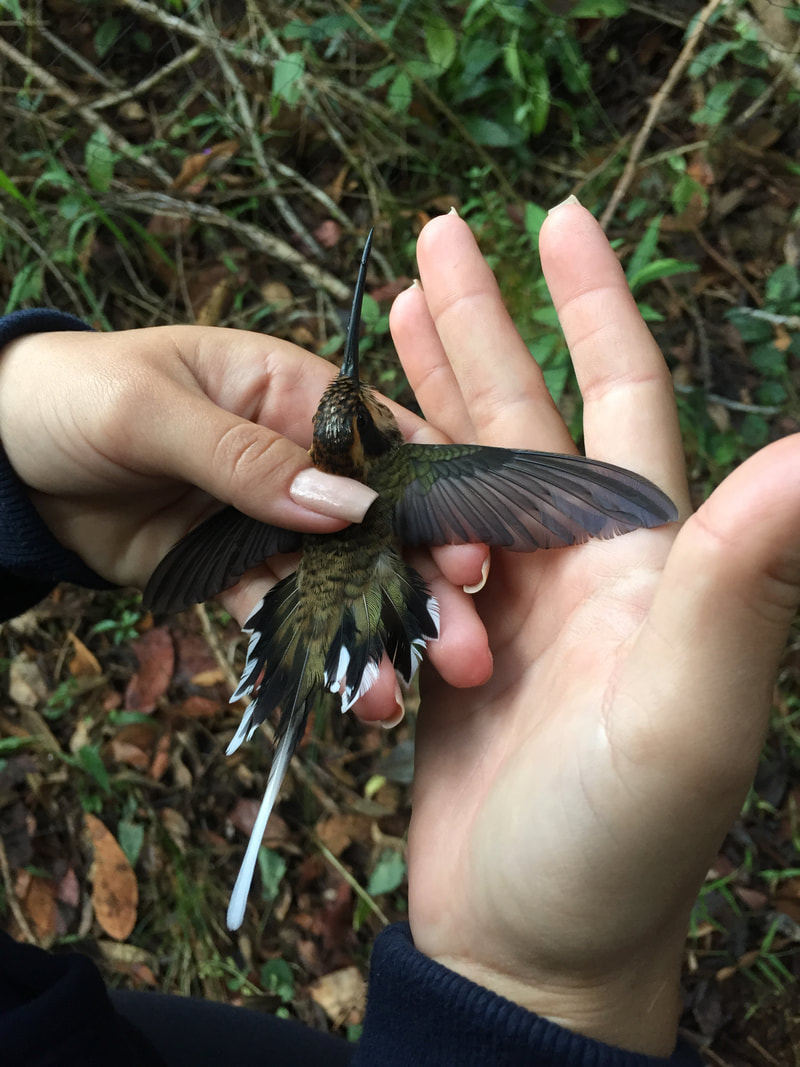Hovering Flight Energetics and Efficiency
|
The metabolic requirements for flight are immense compared to other forms of locomotion, such as swimming or running. Yet birds and other flying organisms are capable of supporting the energy needs necessary for flight for hours to days at a time. Our research examines the physiological and morphological mechanisms that allow for efficient flight, despite this energetic and metabolic challenge. For this, we use hummingbirds to look at the costs of flight, as they are capable of sustained hovering flight and possess the highest metabolic rates when hovering among vertebrates.
Our previous work has shown that the efficiency for flight is higher in larger species compared to smaller species (Groom et al. 2018). The effect of body size on efficiency during hovering may be related to the contraction frequency of the flight muscles, as larger species tend to have lower wingbeat frequencies compared to small species. Our future work seeks to further understand how flight efficiency may vary among other morphological measures, such as wing size. We are also collaborating with other research groups to link foraging ecology and behavior to wing morphological variation, to examine the possible trade-offs between flight performance and energetics. |
Environmental Effects on Flight and Metabolism
|
Environmental variability can impose unexpected challenges on the costs for flight, as the physical environment can impact the metabolic costs through changes in the properties of the air. For example, increases in elevation lead to reductions in air density, which increases the costs to sustain lift. Other environmental stressors encountered during flight can have different impacts on the physiology of birds, as birds must respond to these stressors while expending large reserves of energy. Previous research in the lab has investigated how environmental perturbations, such as elevation (Groom et al. 2016) and humidity (Groom et al. 2018), can have consequences on the metabolic responses during hovering and migratory flight, respectively.
Current projects in the lab set out to examine the daily energy costs for birds in starkly different environments, and attempt to reconcile the daily energetic costs to flight performance and behaviors. |
Seasonal Shifts in Metabolism
The metabolic requirements for birds can vary drastically over the course of the year, from preparation for migration to caring for young. Within seasons, birds must also respond to the daily, shifting energetic demands such as temperature fluctuations or responding to social dynamics. Part of my research program explores the seasonal changes in metabolism and daily energy needs of birds, and how birds differ in their metabolic responses to environmental challenges seasonally. Using a technique called metabolic phenotyping, we will examine the ways in which metabolism can vary across life history stages and migratory strategies.


